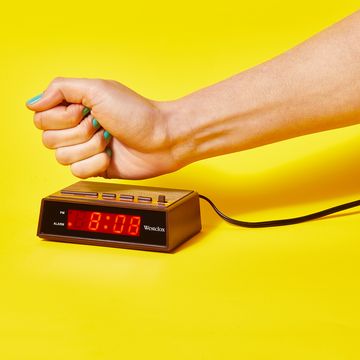On the day after Christmas, Brianna Florer was happily opening Christmas presents at her grandparents' house. By the following night, the 2-year-old was dead — because she swallowed a silver button battery.
"On Saturday she was fine," her grandfather Kent Vice told The Oklahoman. "It was a perfect Christmas."
But for a couple days, the Jay, Oklahoma, toddler had been unwell: throwing up and running a low fever, the Oklahoman reports. Then December 27, she threw up blood and turned blue. Her parents, Brian and Stephanie Florer, called the ambulance and rushed her to the nearest hospital.
From there, doctors diagnosed her condition and she was taken in an ambulance to St. Francis Hospital in Tulsa and immediately brought into surgery. "They operated on her for two and a half hours, but they couldn't stop the bleeding," Vice said. "They believed the battery ate through to her carotid artery by way of her esophagus."
"One minute she is perfect," he added, "and the next minute she is dead."
The family doesn't know when she swallowed the battery, but doctors estimate it was within six days of her death. Eddie Johnson, who works with the state medical examiner's office, said the Brianna's autopsy is pending, and it would be two to four months before an official cause and manner of death is known.
Unfortunately, Brianna's tragedy isn't an isolated incident. Children under the age of 6 swallowed batteries in a reported 11,940 incidents between 2005 and 2014, according to the National Capitol Poison Center in Washington, D.C. Of those, 15 children died and 101 suffered major medical problems.
Typically, batteries simply pass through the digestive system. "These devastating outcomes occur in small children when batteries get stuck in the esophagus," Dr. Toby Litovitz, the center's medical and executive director, explained to The Oklahoman. When this happens, alkaline batteries can open and release chemicals which corrode or burn.
And when a lithium button battery lodges there, it sends an electrical current through the tissue. "[This current] is causing more damage because it is splitting the water surrounding the button battery and forming hydroxide, which is an ingredient in lye," Litovitz said. This passes into whatever tissue is nearby, including the aorta or the trachea.
Other serious complications can arise when small batteries are put into the nose or ear, Litovitz said. "The important thing to remember is — these batteries are everywhere."
The Consumer Product Safety Commission warns that button batteries are often used in toys, but also in hearing aids, remote controls, musical greeting cards, watches, and light-up clothes and shoes. A child can suffer chemical burns within as few as two hours of ingesting lithium batteries, so the CPSC warns against keeping them within reach of small children.
Now, Brianna's family hopes her story helps keep other children safe. "The family continues to be just so thankful for all of the prayers, love, kindness, and support they are being shown from all over the world now... They continue to want Brianna's story to be a warning for others as they pray that this will never happen to another child," a friend posted on a GoFundMe page created to help with funeral expenses. "Brianna's role in her family was the family entertainer. She was always trying to make everyone smile and laugh."
[via The Oklahoman













